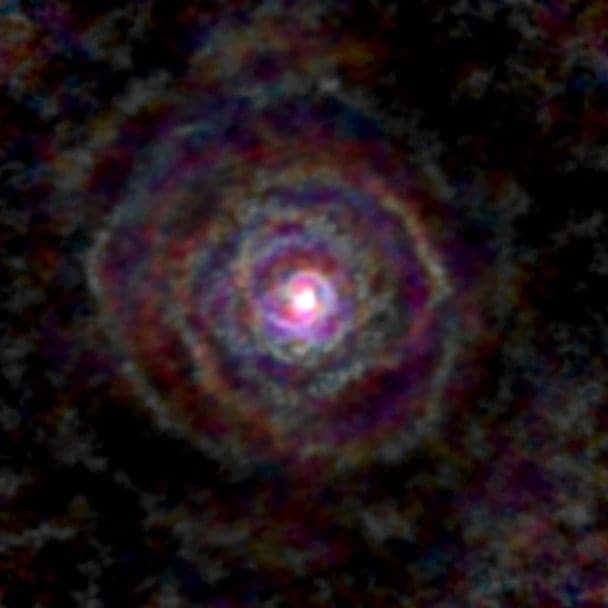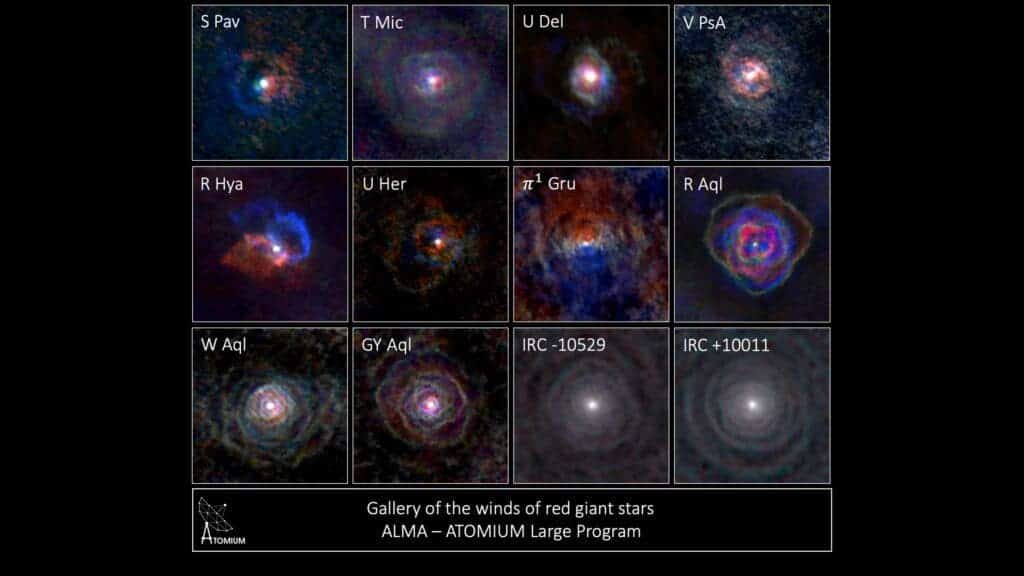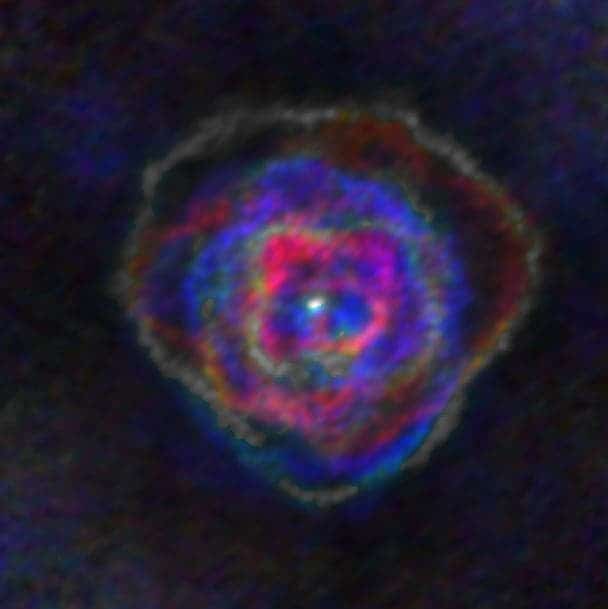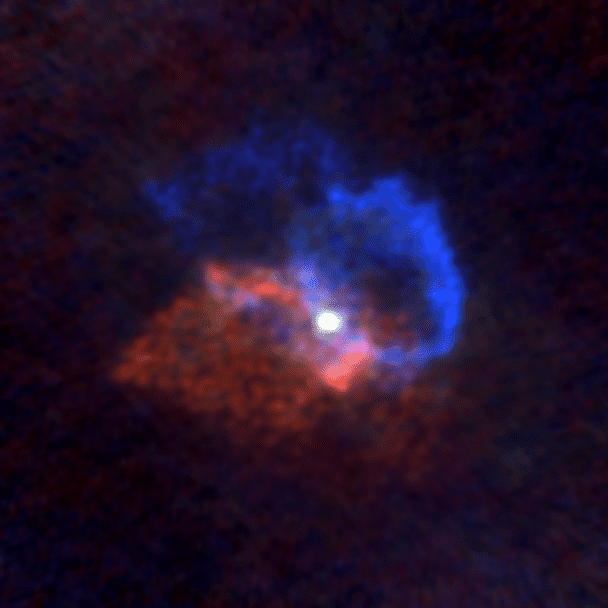New observations have revealed that stellar winds are not spherical as previously believed, but instead come in a variety of shapes that resemble those of planetary nebulae — created when a dying star explosively sheds its outer layers, which by a weird naming quirk actually have nothing to do with planets. In fact, those winds could mark out the ‘molds’ by which planetary nebulae are shaped.
The discovery comes as a result of research conducted by a team of astronomers including Leen Decin, from the Institute of Astronomy, KU Leuven, and is detailed in a paper published today in the journal Science. “We noticed these winds are anything but symmetrical or round,” Decin says. “Some of them are actually quite similar in shape to planetary nebulae.”

[Credit: Decin et al., Science (2020)] (L. Decin, ESO/ALMA)
The team believes that this variety in stellar winds and planetary nebulae shape around dying stars are connected and a result of interactions with companion stars in binary pairings, or even from exoplanets in orbit around the stars. “The Sun — which will ultimately become a red giant — is as round as a billiard ball,” Decin explains. “So we wondered; how can such a star produce all these different shapes?”
The findings collected by the team could explain a long-standing mystery of planetary nebulae around stellar remnants like red dwarfs come in a variety of close-but-not-quite-spherical shapes.
Planetary nebulae display such a wide range of complex shapes and structures that although the influence of binary companions has been suggested as a possible cause of this diverse range of asymmetric forms, the fact they can arise around stars with spherically symmetric stellar winds has, until now, remained unexplained.
The answer found by the team is that these winds aren’t symmetric at all and that the shape of the winds directly informs the shape of planetary nebulae.
Dying Stars’ Companions are a Bad Influence
The observations of the stellar winds of 14 AGB stars using the Atacama Large Millimeter/submillimeter Array made by the team were so-detailed that they actually allowed the team to categorize the shapes of the stellar winds and planetary nebula. Some were disc-shaped, some contained spirals, and some were conical — a good indication that the shapes were not created randomly — but, none had spherical symmetry.

including disks, cones, and spirals. The blue colour
represents
material that is coming towards you, red
is material that is moving away from you. (L. Decin, ESO/ALMA)
In fact, the team realized it was the presence of other low-mass stars or exoplanets in the vicinity of the primary star that was shaping the stellar wind and planetary nebula. Professor Decin is on hand to provide a useful and colorful analogy: “Just like how a spoon that you stir in a cup of coffee with some milk can create a spiral pattern, the companion sucks material towards it as it revolves around the star and shapes the stellar wind.”
Stellar winds are important to astronomers as they account for one of the main mechanisms by which stars lose mass. This mechanism becomes even more critical when attempting to understand the death throes of stars of similar sizes to the Sun and as their cores contract and the outer layers swell creating planetary nebulae — the other major contributor to mass-loss in aging stars. Discovering the role played by stellar companions in such a process is a surprise, to say the least.

“All our observations can be explained by the fact that the stars have a companion,” says Decin. “Our findings change a lot. Since the complexity of stellar winds was not accounted for in the past, any previous mass-loss rate estimate of old stars could be wrong by up to a factor of 10.”
Following this discovery, the team will now research how it impacts other crucial characteristics involved in the life and death stars like the Sun. In the process, the team believes that their research will add more depth to our view of stars.

“We were very excited when we explored the first images,” adds co-author Miguel Montargès, also from KU Leuven. “Each star, which was only a number before, became an individual by itself. Now, to us, they have their own identity. “This is the magic of having high-precision observations: stars are no longer just points anymore.”
But, whilst we are on the subject of the future, the team says their findings have particular ramifications for the end of our own star.
Death Spiral: How the Sun Dies and What it Leaves Behind
The Sun is roughly halfway through its lifetime, with half its core hydrogen exhausted, meaning that in approximately 5 billion years it will start to die. For a star of the Sun’s mass, this means undergoing the transformation into a red giant.
For stars with masses greater than the Sun, the collapse of their core will spark a new lease of life, with the fusion of helium into heavier elements being kick-started by tremendous gravitational pressure, providing an outward force that halts the collapse.
The Sun, in contrast, will fade as its core cools, the planetary nebula will continue to expand outwards, ultimately resulting in a white dwarf surrounded by diffuse material that was once its outer layers.
The team’s research gives us an idea of just what shape this planetary nebula will take, and how it will be crafted by the solar system’s largest planets. “Jupiter or even Saturn — because they have such a big mass — are going to influence whether the Sun spends its last millennia at the heart of a spiral, a butterfly, or any of the other entrancing shapes we see in planetary nebulae today,” Decin notes.
“Our calculations now indicate that a weak spiral will form in the stellar wind of the old dying Sun.”






